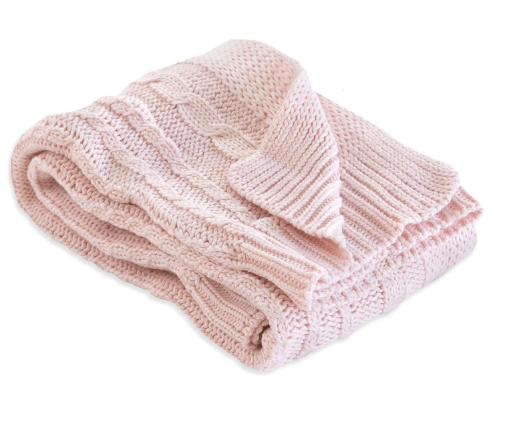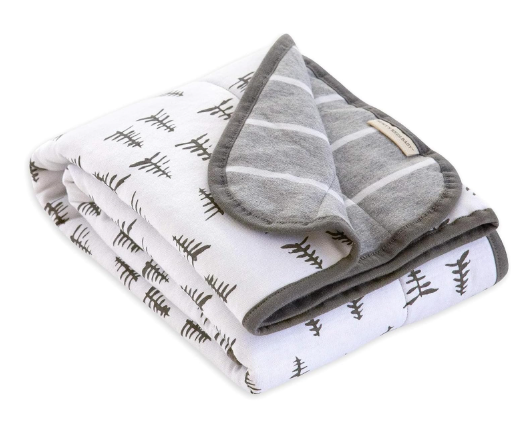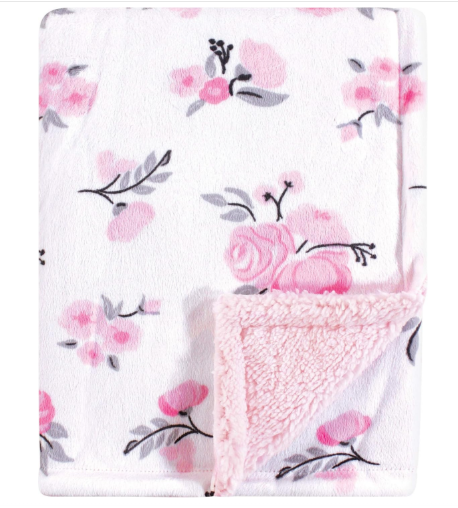The 5 Best Baby Blankets of 2025: From Organic Cotton to Cozy Plush
A baby blanket is more than just a layer of warmth; it’s a first friend, a constant comfort, and a treasured keepsake. We’ve researched, tested, and cuddled the best of the best to help you choose the perfect one for your little one.
Choosing a baby blanket is a truly special task. You’re not just buying a piece of fabric; you’re selecting a source of security that will witness countless milestones, from the first car ride home to late-night cuddles and the transition to a toddler bed. It’s a decision rooted in love, safety, and the desire for ultimate comfort.
As parents and product experts at Blanket Insider, we know this decision carries weight. That’s why we’ve poured our experience into this guide. We’ve sifted through hundreds of options, focusing on material safety, breathability, durability after multiple washes, and, of course, that all-important softness factor. This isn’t just a list of popular products; it’s a carefully curated selection of blankets we’d confidently use with our own families.
The Ultimate Baby Blanket Buying Guide
Before you fall in love with a cute pattern, it’s essential to understand what makes a baby blanket great—and safe. Here’s what we prioritize in our testing and what you should look for.
A Crucial Note on Safe Sleep
The American Academy of Pediatrics (AAP) recommends a bare crib for the first year to reduce the risk of SIDS. This means no loose blankets, pillows, or soft toys. Blankets should be used for supervised cuddling, tummy time, or stroller walks. For crucial safety information on when it’s appropriate to introduce a blanket for sleep, please read our detailed guide on when a baby can sleep with a blanket. Your baby’s safety is the number one priority.
Our Top 5 Baby Blankets for 2025
After our extensive review process, these five blankets have earned their place as the best of the best, each excelling in a specific category to meet the diverse needs of families.

For parents prioritizing natural, gentle materials, the Burt’s Bees Baby Cable Knit Blanket is the clear winner. Made from 100% GOTS certified organic cotton, this blanket feels as pure and soft as it sounds. The classic cable knit design is not just for looks; it provides a lovely texture and a medium weight that’s perfect for year-round use.
During our review, we were impressed by its breathability and durability. It holds up beautifully in the wash, maintaining its shape and softness. At 30″ x 40″, it’s the ideal multi-purpose size for everything from stroller outings to being a toddler’s favorite cuddle companion. It’s a timeless, high-quality piece that makes a wonderful and responsible gift.
⭐Key Features
- 100% GOTS Certified Organic Cotton
- Soft, breathable cable knit weave
- Versatile 30″ x 40″ size
- Machine washable
✅Pros
- Extremely soft and gentle on newborn skin
- Eco-friendly and sustainably made
- Elegant design fits any nursery decor
⚠️Cons
- Fewer color options than other brands

This reversible blanket from Burt’s Bees offers the best of both worlds, making it our top pick for all-season versatility. One side features a soft, 100% organic cotton jersey knit with a charming print, while the other side is a plush, velvety velour. This dual-sided construction makes it adaptable to changing temperatures.
The gentle polyester filling adds a layer of quilted warmth without being overly heavy, providing a cozy cocoon for cooler days. We love that you get two looks in one, and the quality is consistent with the Burt’s Bees brand—durable, well-stitched, and made with baby’s comfort in mind. It’s a practical and beautiful workhorse of a blanket.
⭐Key Features
- 100% Organic Cotton shell
- Reversible print-to-solid design
- Light polyester fill for warmth
- Standard 30″ x 40″ size
✅Pros
- Two textures for different seasons
- Soft, cozy, and gentle material
- Durable and machine washable
⚠️Cons
- Polyester filling may be too warm for peak summer

For newborns, a great swaddle is priceless, and the Momcozy Muslin Blankets excel at this and so much more. The blend of bamboo viscose and cotton creates a fabric that is unbelievably soft, lightweight, and breathable. The generous 47″ x 47″ size provides plenty of room to get a secure swaddle on babies of all sizes, and it continues to be useful long after the swaddling phase ends.
Parents in our testing group raved about the versatility of these blankets, using them as nursing covers, stroller shades, burp cloths, and play mats. They get progressively softer with each wash and the airy muslin fabric is perfect for preventing overheating. This 4-pack offers incredible value and is an absolute must-have for any new parent’s registry.
⭐Key Features
- 70% Bamboo Viscose, 30% Cotton blend
- Large 47″ x 47″ size for swaddling
- Lightweight and highly breathable
- Multi-functional use
✅Pros
- Exceptionally soft and silky fabric
- Versatile for many different uses
- Excellent value (4-pack)
⚠️Cons
- Too lightweight for very cold weather

When you want to give a truly special gift that screams luxury and comfort, the Barefoot Dreams CozyChic Blanket is the ultimate choice. Famous for its impossibly soft, plush microfiber, this blanket is the epitome of cozy. The moment you touch it, you understand the hype. It has a unique, stretchy quality that makes it perfect for snuggling.
While it comes with a premium price tag, its durability and cloud-like softness are unmatched in the synthetic category. It’s a celebrity favorite for a reason. This is the blanket that will be treasured for years, often becoming a child’s most beloved “blankie.” It’s a splurge, but for a baby shower or a first birthday, it’s a gift that will be deeply appreciated.
⭐Key Features
- 100% Polyester Microfiber
- Signature CozyChic plush fabric
- Won’t shrink, pill, or wrinkle
- Machine washable and dryable
✅Pros
- Legendary, unparalleled softness
- Extremely durable and long-lasting
- Makes an unforgettable luxury gift
⚠️Cons
- Premium price point
- Not a natural, breathable fiber

Proving that you don’t have to spend a fortune for incredible softness, the Hudson Baby Plush Blanket is our top budget-friendly pick. This blanket offers fantastic value with its super-soft plush mink and sherpa construction. It’s wonderfully warm and cozy, making it perfect for stroller walks on chilly days or for keeping baby snug in their car seat.
Available in a huge array of adorable prints and patterns, there’s a design to suit every style. It’s a large, comfortable blanket that provides excellent warmth without breaking the bank. While it’s not made from natural fibers, it is a durable, easy-to-care-for option that is perfect for everyday use or for stocking up the daycare bag.
⭐Key Features
- 100% Polyester Plush
- Warm mink and sherpa texture
- Large variety of designs
- Machine washable and dryable
✅Pros
- Excellent price point
- Incredibly soft and warm
- Durable for everyday use
⚠️Cons
- Not made from natural/breathable materials
At a Glance: Feature Comparison
Use this table for a quick side-by-side comparison of our top picks to see which blanket best fits your needs.
| Product | Best For | Material | Size | Key Feature |
|---|---|---|---|---|
| Burt’s Bees Cable Knit | Organic Purity | 100% Organic Cotton | 30″ x 40″ | Breathable, timeless knit |
| Burt’s Bees Reversible | All Seasons | Organic Cotton / Poly | 30″ x 40″ | Dual-sided textures |
| Momcozy Muslin Swaddles | Swaddling & Versatility | Bamboo / Cotton Blend | 47″ x 47″ | Ultra-soft and breathable |
| Barefoot Dreams CozyChic | Luxury Gifting | Polyester Microfiber | 30″ x 40″ | Unmatched softness |
| Hudson Baby Plush | Budget-Friendly | 100% Polyester | 30″ x 40″ | Warm, cozy, and affordable |
Caring For Your Blankets (Baby’s and Yours!)
Keeping your baby’s blankets soft and clean is simple with a few tips: always use a gentle, baby-safe detergent, wash on a cool, delicate cycle, and tumble dry on low heat. But what about the other comfort items in your home? As your family grows, so does the collection of blankets! From the cozy throw on the sofa displayed on a stylish blanket ladder, to the rugged blanket for the beach, each has its own care needs. You may even wonder, can you wash a weighted blanket? (Yes, you can!), and the process for how to properly wash a weighted blanket or even a heated blanket is a bit different. Mastering the laundry keeps everyone’s favorite comfort items in top shape!
Choosing The Perfect First Friend
A baby blanket is one of the first objects your child will form a bond with. It will be there for moments of joy, tears, and everything in between. Whether you choose the pure, organic softness of Burt’s Bees, the incredible versatility of the Momcozy swaddles, or the luxurious comfort of Barefoot Dreams, you’re choosing a companion for your child’s earliest adventures.
Ultimately, the best blanket is one that is safe, soft, and loved. We hope this guide has made your decision a little easier, so you can focus on what really matters: soaking up every precious moment with your new baby.
